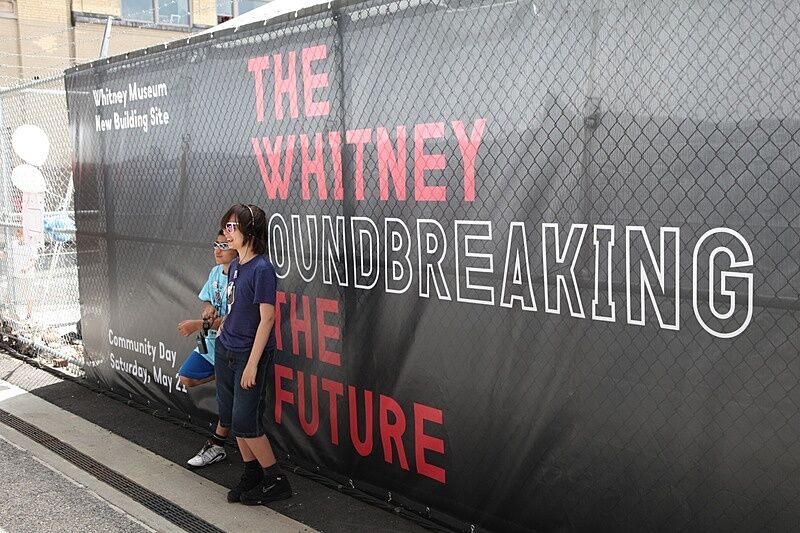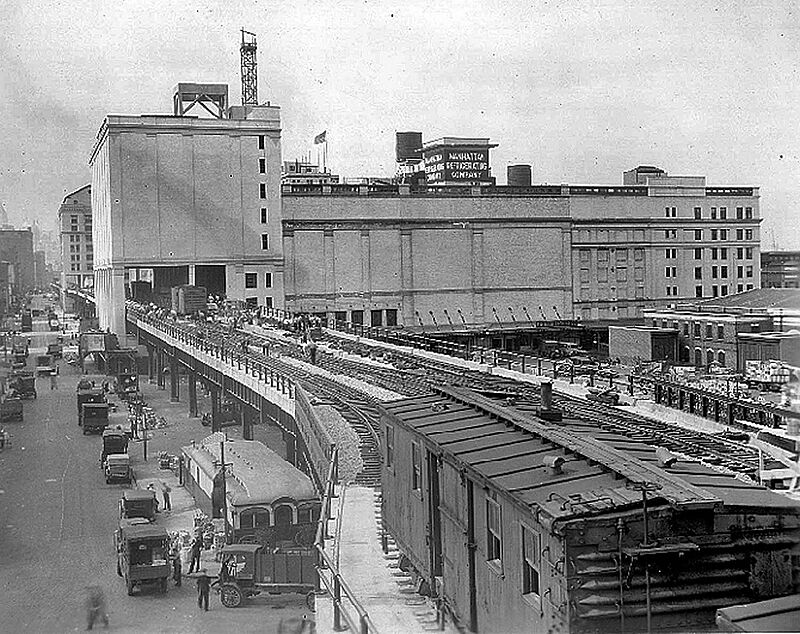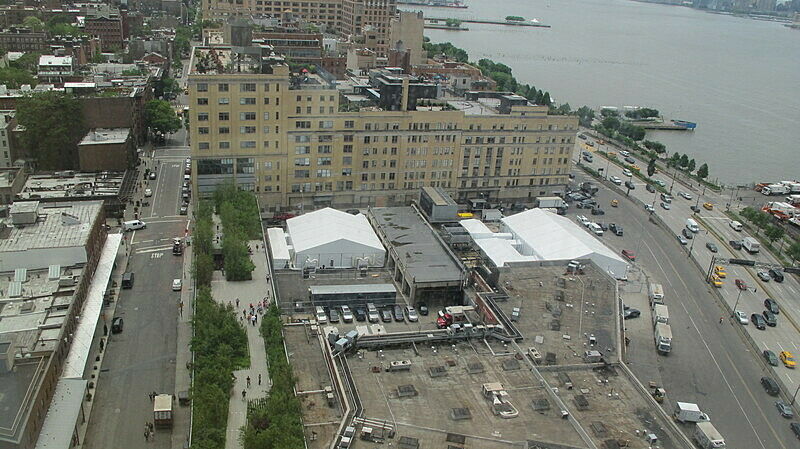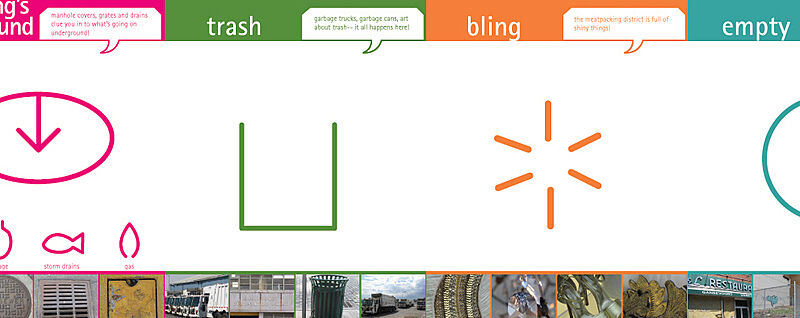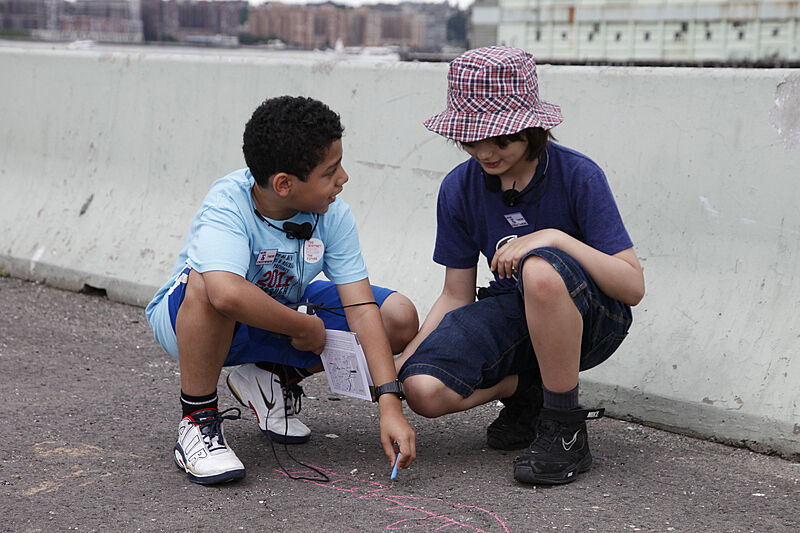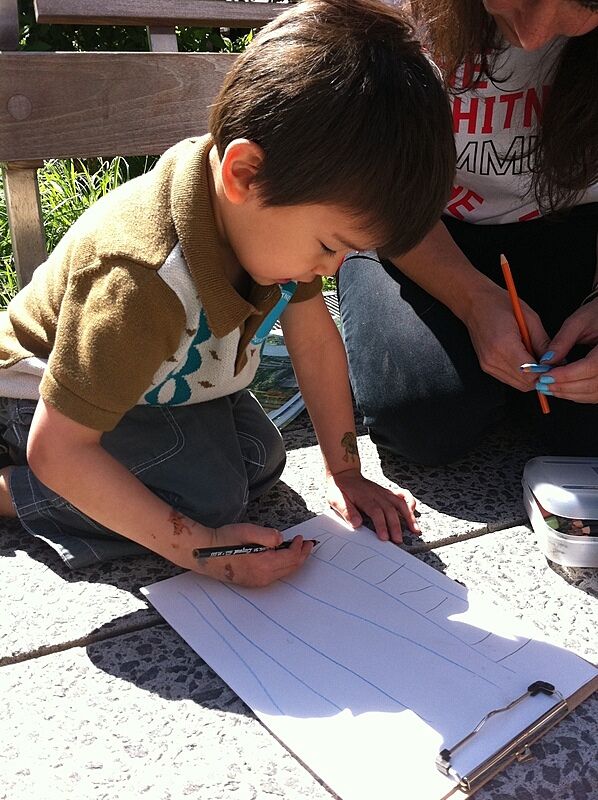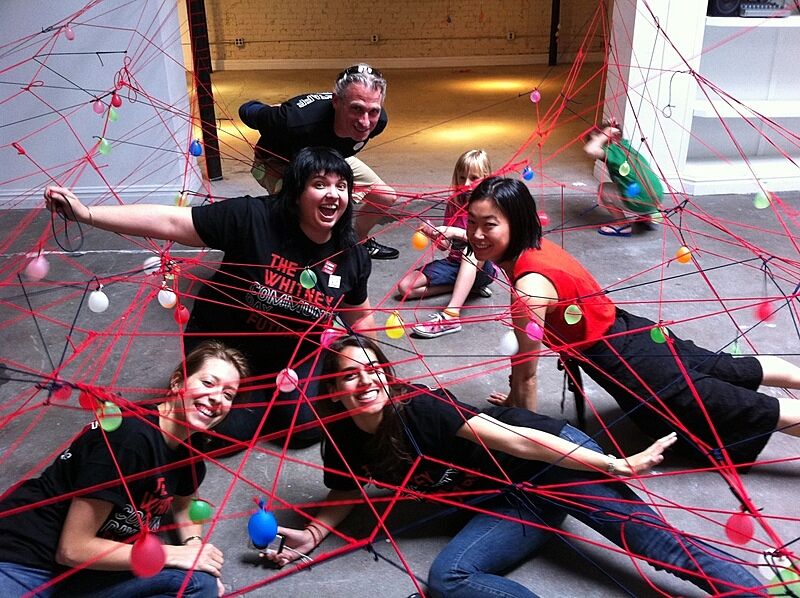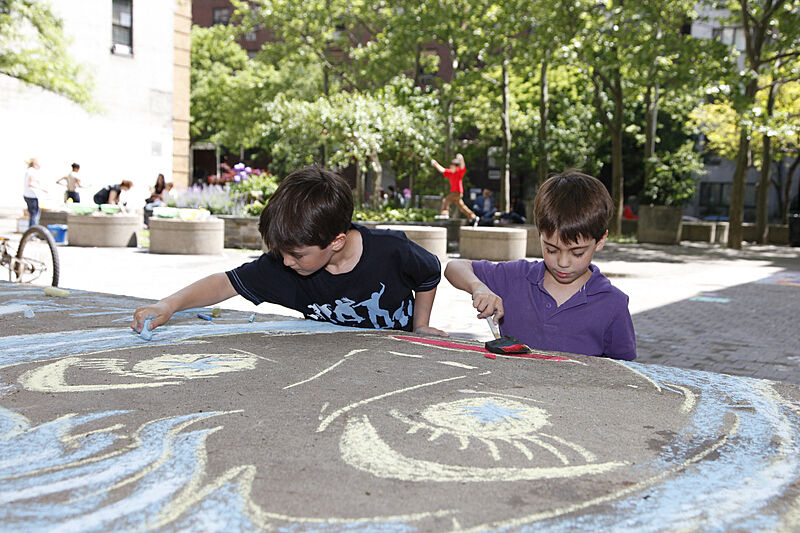Community Day: Family Programs
Jun 16, 2011
On May 21, the Whitney hosted a Community Day to celebrate groundbreaking for the new building project in the Meatpacking District. We offered a day of free programs and artists’ projects for all ages. Family Programs had an array of exciting activities in store for kids and parents!
In the morning, we collaborated with the Friends of the High Line to provide sketch tours for families in a program titled Now and Then: Whitney Family Programs on the High Line. Whitney educators led kids and parents in exploring the changing landscape of the Museum’s future neighborhood. First open to the public in 2009, the High Line is a park built on the former elevated railroad that ran through the lower west side of Manhattan. The Whitney’s new building, designed by architect Renzo Piano, will be adjacent to the southern entrance to the High Line. After looking at historic photos of the park, both when it operated as a railroad and the many years in which it was abandoned in disrepair, families sketched those same spots as they are today. We then imagined and drew how the skyline might look with the Whitney’s future building.THEN
NOW
After the sketch tours, families were invited to liven up the Westbeth Artist Housing’s courtyard space with some outdoor art. The night before, street artist Ellis Gallagher had made chalk drawings in Westbeth’s courtyard at twilight, using the shadows cast by objects in the dim light as his inspiration. He joined families the next day as they added their own chalk masterpieces to the mix.
In the Community Open House tent located on the Whitney’s new building site at Washington and Gansevoort Streets, families picked up their free limited-edition guide to the neighborhood. The guide—The Low Line—was designed by Lize Mogel, an interdisciplinary artist who creates what she calls “counter-cartography,” maps that produce new, and often radical, interpretations of social and political issues. Created especially for kids, Mogel based this project on hobo signs. Hobos traveling around the United States between the 1890s and 1930s chalked symbols onto buildings, fences, and other structures. The symbols were a secret language to communicate useful information, such as places to sleep and find food, or warnings about unfriendly people, vicious dogs, and other hazards. Similarly, Mogel devised a language of symbols for kids to encrypt their own messages on the “Low Line,” the area under the High Line park. The guide invites families to look closely at their urban surroundings and leave chalk markings designating everything from rooftop gardens to what goes on underground.Just around the corner of the new building site, kids explored an installation designed just for them by 2010 Biennial artist, Aki Sasamoto. The installation and performance artist activated a vacant space at 72 Gansevoort Street. Learn more about Sasamoto’s project here.
Learn more about the Whitney of the Future and Family Programs at the Museum.
By Desi Gonzalez, Education Assistant

